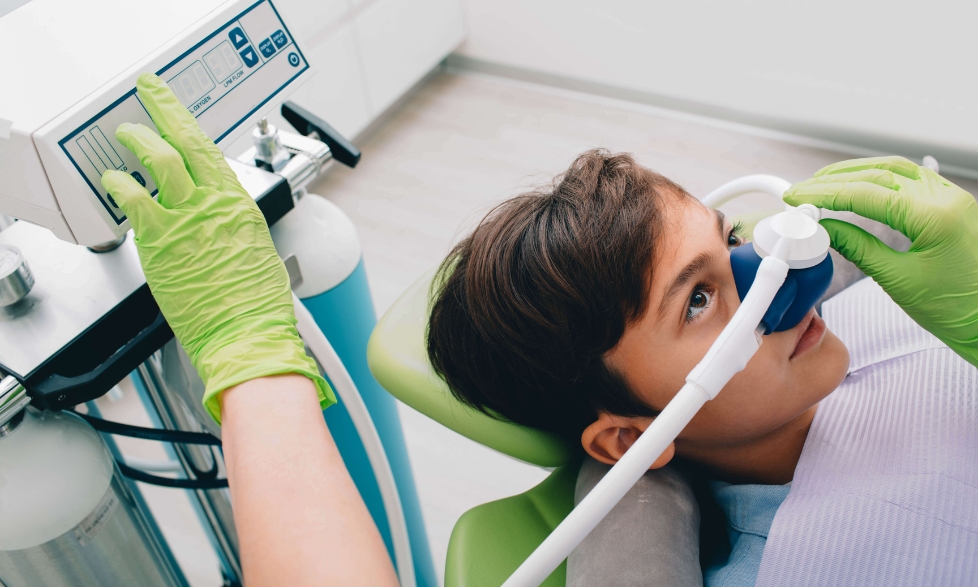Now Accepting New Patients!

conscious sedation and what makes it safe in pediatric care.
When it comes to your child’s health and well-being, no decision is taken lightly—especially when sedation is involved. Whether it’s a dental procedure or a minor surgery, hearing the words “conscious sedation” can be enough to make any parent’s heart skip a beat.
But here’s the thing: conscious sedation isn’t about “knocking your child out”—it’s about keeping them calm, safe, and pain-free.
So let’s break it all down: what conscious sedation really is, how safe it is for children, and what parents should know before giving the green light.
What Is Conscious Sedation?
Conscious sedation is a technique used to relax children while keeping them awake and responsive during a medical or dental procedure. It’s typically administered through oral medications, IV, or inhalation (like nitrous oxide), depending on the procedure and the child’s needs.
Unlike general anesthesia, your child can breathe on their own and may even respond to simple questions or commands. They won’t be unconscious—they’ll just be in a deeply relaxed state, often with little memory of the procedure afterward.
Why Sedation Dentists Recommend It
Let’s be real—kids and needles, drills, or surgery don’t mix well. Conscious sedation helps by:
- Reducing anxiety before and during the procedure.
- Minimizing movement that can interfere with treatment.
- Ensuring cooperation from younger or special needs children.
- Providing mild pain relief for minimally invasive treatments.
Is Conscious Sedation Safe for Children?
Yes—when performed by trained professionals in the right environment, conscious sedation is considered extremely safe. Here’s why:
- Careful pre-sedation screening is done by our sedation dentist in Washington, to evaluate your child’s medical history, allergies, and risk factors.
- Dosage is tailored to your child’s weight and age.
- Continuous monitoring of oxygen levels, heart rate, and breathing throughout the procedure.
- Emergency protocols and reversal agents are on hand, just in case (though rarely needed).
Most importantly, conscious sedation is widely used in pediatric dentistry and outpatient procedures—and backed by national pediatric associations.
Types of Conscious Sedation for Kids
Here are the most common methods:
1. Nitrous Oxide (Laughing Gas)
- Inhaled through a mask.
- Mildest form.
- Wears off quickly.
2. Oral Sedation
- Given in liquid or pill form.
- Stronger than nitrous.
- Takes a little longer to wear off.
3. IV Sedation
- Injected through a vein.
- Quick onset and highly adjustable.
- Typically used for more involved procedures.
Each type is chosen based on the child’s age, anxiety level, and the procedure being done.
What Can Parents Expect Before & After?
Before The procedure
- Your child may need to avoid food or drink for several hours.
- You’ll receive clear instructions on medication, clothing, and what to bring.
- Providers will explain everything and answer your questions (so ask away!).
After The Procedure
- Your child may be groggy or sleepy for a few hours.
- Some kids experience mild nausea or irritability, but this passes quickly.
- Plan for rest and hydration for the rest of the day.
According to the American Academy of Pediatric Dentistry, 88% of children who undergo conscious sedation report a positive experience—with no memory of discomfort.
That’s peace of mind, both for kids and their parents.
Safe, Effective, and Kid-Friendly
Conscious sedation might sound intimidating, but in the hands of trained pediatric professionals, it’s a game-changer for making procedures less stressful for your child—and for you. With modern techniques, safety protocols, and ongoing monitoring, it’s both safe and effective.
So, is conscious sedation safe for your child?
Yes—when done right, it’s one of the safest and most comforting options available.
Still have questions or need to schedule a consultation? Talk to our sedation dentist to understand what’s best for your little one—and take that next step with confidence.